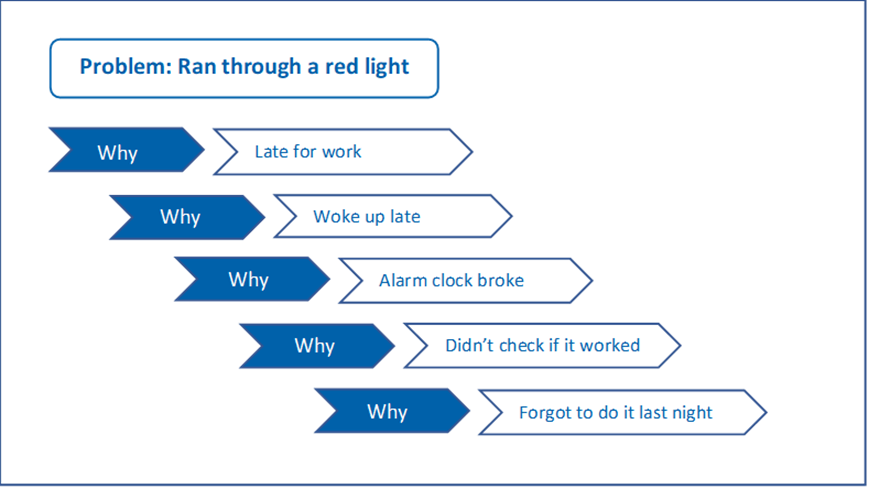Using the “5 Whys Analysis” to Process Professional Feedback

We constantly receive feedback. We hear it every day in one way or another, often unsolicited. When done socially or in passing, criticism is easy to take lightly or brush off. However, in a work environment, feedback can be a lot more unsettling. We are driven to excel at our jobs, so professional feedback is taken to heart and internalized.
While we recognize that feedback is a critical part of professional growth, we need to learn how to manage it productively. Knowing how to accept constructive criticism is a good first step, but knowing how to utilize it to find an effective solution to the problem will set you on the path to positive progress.
Facing Negative Professional Feedback
Getting negative professional feedback is tough, and there’s a rush of emotion associated with it. Generally, that rush causes you to jump to the defensive, to rationalize your actions in order to protect yourself.
However, it’s important to understand that negative feedback isn’t meant to chastise. Instead, it needs to be seen as the first step in finding a solution to a problem.
Internalizing Feedback
After receiving negative feedback, it’s important take time to internalize it and make sure you understand what was communicated. But the next key step is to begin looking for the root of the problem. Simply actioning the problem at the surface won’t lead to meaningful change.
As a consultant, a natural and constructive response to feedback is to dissect it in order to find the root cause. Using a root cause analysis, such as the 5 Whys Analysis, is the most logical way to understand the underlying problem that led to the feedback.
The 5 Whys Analysis is a straightforward but powerful tool. It starts with stating the initial problem, and then asking “Why?” five times in succession to get to the problem’s source. Here’s an example to illustrate how the 5 Whys Analysis works:

On the surface, the problem appears to be running a red light, and without analysis there may be a rush to an “I promise I won’t do it again” solution. But by using the 5 Whys Analysis, it becomes apparent the real problem is a lack of an effective nighttime routine. This is the discovery that can lead to meaningful, fundamental change.
In a professional setting, we can use the example of receiving negative feedback on a final report. It’s not enough to say, “I’ll write a better one next time.” The real path forward to change is dissect the feedback to understand what the shortfalls were, to use the 5 Whys Analysis to understand what caused those shortfalls, and then to use that knowledge to write a better report next time.
Result
Receiving negative feedback is difficult, but necessary. What you do with the feedback will determine how successful you can be at solving the problem and getting on path to progress. Adopting the 5 Whys Analysis to dissect feedback will help you stay open to constant improvement.




 English
English







